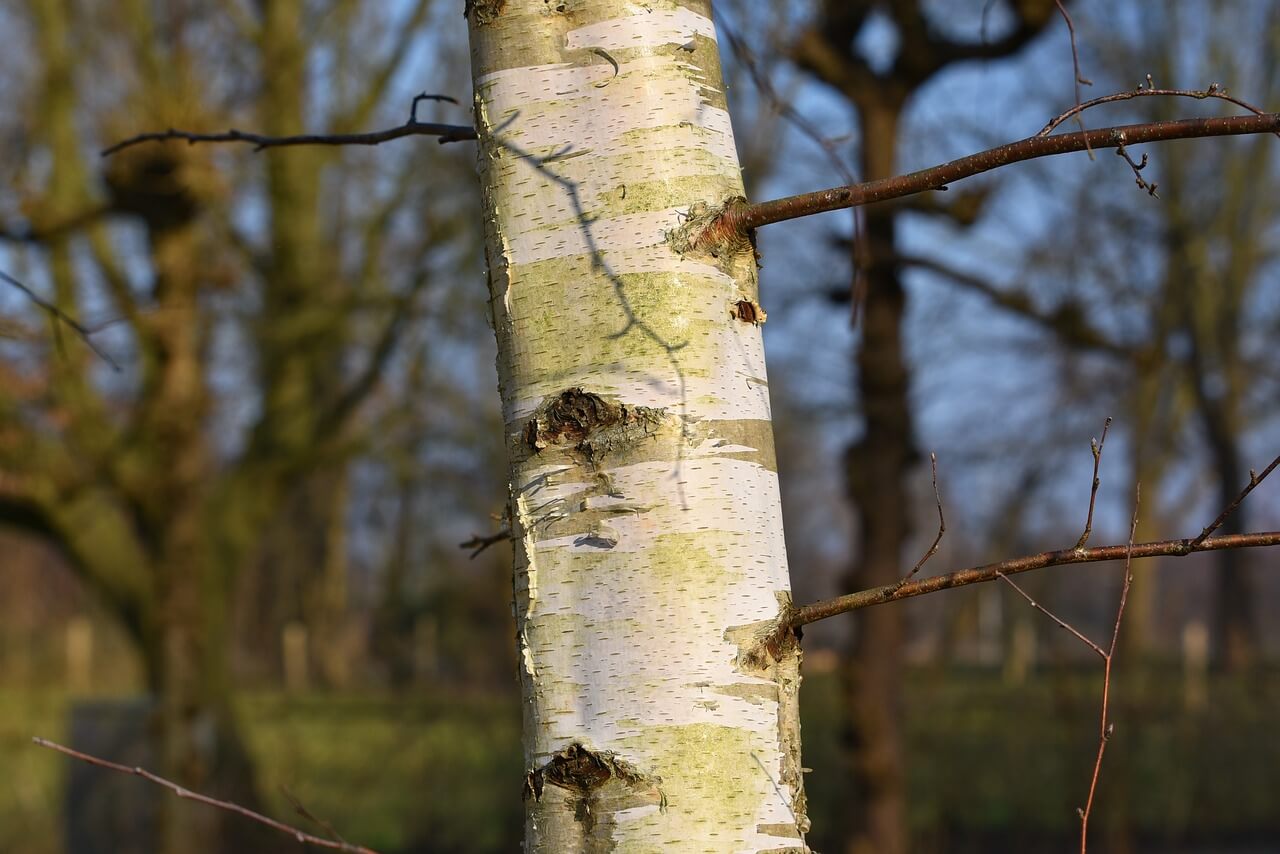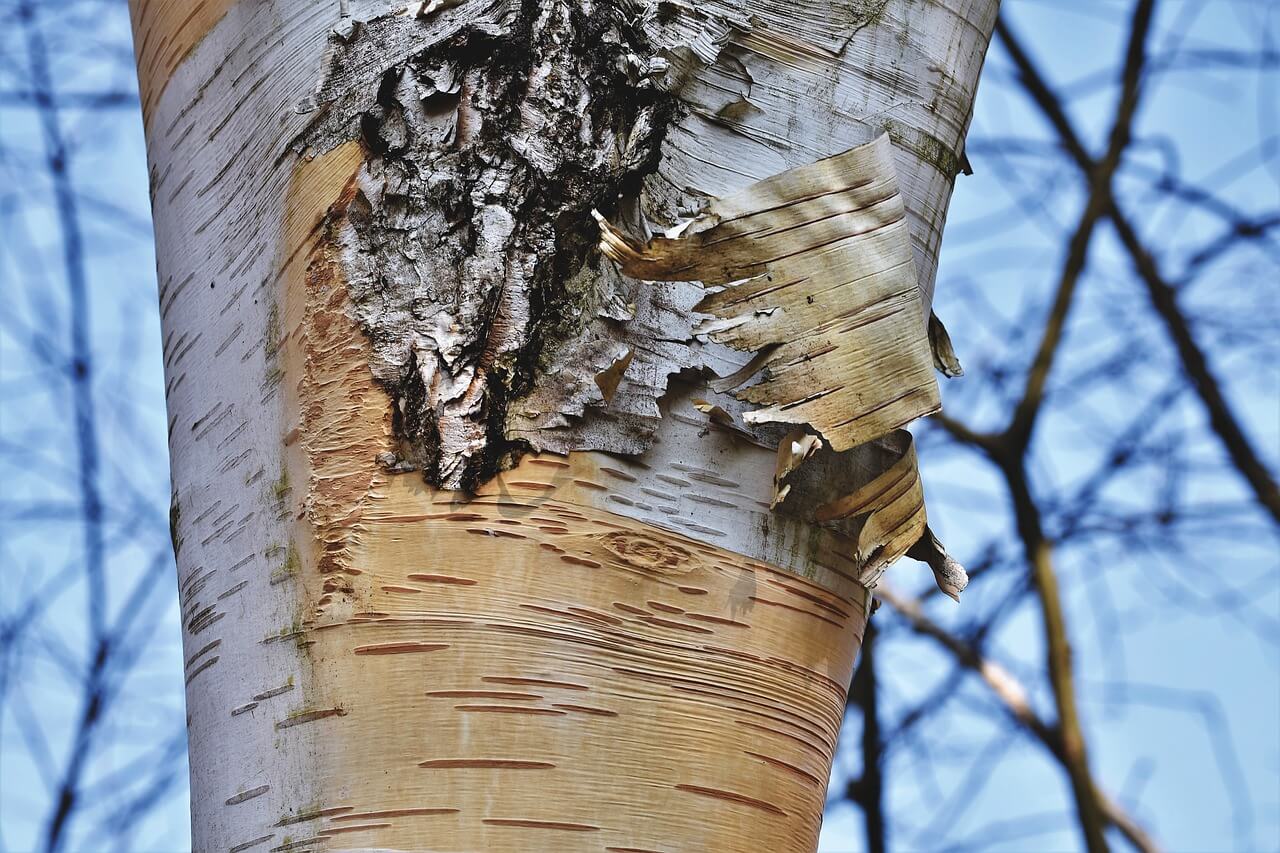Birch bark is known for its white, papery appearance; but did you know that it also has many practical uses? In this article, we’ll talk about how to harvest birch bark without killing the tree, as well as why people harvest birch bark in the first place. We’ll also discuss how to store your bark once you’ve harvested it. Ready to get started?
What You'll Learn Today
Why Harvest Birch Bark?

You may have heard about people harvesting birch bark. If you’ve got birch trees on your property, maybe you’d like to find out what it’s used for–what, exactly, do people do with the bark of these pretty white-trunked trees?
Birch bark has many different applications. It is commonly used for medicinal purposes as well as building and crafting activities.
Birch bark is sometimes used to treat various medical conditions, including:
- Joint pain
- Kidney and bladder stones
- UTIs
- Skin problems
In addition to its medicinal properties, birch bark is lightweight, waterproof, and beautiful. It can be used for a wide variety of arts and crafts.
Ojibwa Indians have used birch bark for hundreds of years, forming it into canoes, baskets, dishes, floor mats, wigwam coverings, and many other common items. The bark is easily workable when softened in warm water, and it will dry hard and strong.
Does Taking the Bark off a Birch Tree Kill It?
According to the Bureau of Indian Affairs in Michigan, removing bark from a birch tree won’t harm the tree as long as you do it correctly. It should only be collected from live trees during the spring, when the bark is already loose and easily peels away from the wood underneath.
If you’re concerned about harming your trees when collecting bark, it’s important to note that you don’t have to collect from live trees.
Look for dead or fallen trees in your area. Birch bark lasts a long time even after a tree has died, so it’s entirely possible you’ll be able to find usable bark on a dead tree.
How Do You Harvest Birch Bark Without Killing the Tree?
To keep from harming a live birch tree, you’ll want to collect the bark right after sap season– usually during April through June depending on your specific region. Bark will come off easily during this time thanks to moisture in the wood from the recent sap flow.
For craft purposes, you should only remove the outer bark, which is about ¼ inch thick. Take care not to damage the inner bark, as this may kill the tree.
If you’re planning to collect the bark for medicinal purposes, you will need the inner bark. In this case, it’s best to cut down a small sapling or take the inner bark from large branches that have been recently pruned away.
Again, do not take large sections of inner bark from the trunk of a live tree. The inner bark is where the medicinal properties are most concentrated, but removing this inner layer greatly weakens the tree and leaves it susceptible to disease.
Even when harvesting the outer bark, take no more than you need and, if possible, collect it from more than one tree. You should only choose thriving, healthy trees, as these have the best chance of recovering without being injured or stunted.
Before removing a large section of bark, cut away a small piece to make sure it is suitable for your needs–strong and flexible, thin or thick enough, etc. The exact properties of the bark will vary from tree to tree.
Keep in mind that younger trees will have thinner bark, while older trees will have thicker bark.
How Do You Remove Birch Bark From a Tree?
First, check out a tutorial video like the one below. It really helps to have a good visual of the process before you start.
After you’ve selected your tree, score the bark with a sharp knife, making sure to cut through the bark’s outer layer without slicing too deep. You may have to score it a couple of times to cut deeply enough.
The score mark should run lengthwise along the tree’s trunk–it should be perpendicular with the ground. Make small horizontal marks at the top and bottom of the long perpendicular mark to create an i-shaped cut.
In one of the corners, insert your knife and gently pry the bark away from the wood along the score mark. Once you have the edges lifted away, slide your hand under the bark and continue lifting it away from the wood as you work your way around the tree.
The bark should peel up fairly easily during mid to late spring. If it doesn’t, you may need to find a new tree to harvest from.
How Do You Store Birch Bark?

Once you’ve collected your birch bark, you’ll need to store it in a cool, dry place until you’re ready to use it. There are a couple of ways you can do this.
If you want to store it flat for use in various craft projects, spread it out on a table and place weights at each corner. Any objects heavy enough to hold it down will work as weights.
If you don’t need the bark to be perfectly flat before using it, you can simply store it in rolls. The bark tends to come off the tree in rolls, so this is its most natural form.
The bark will dry out naturally over time. For best results, keep it in areas of low humidity.
When you’re ready to work with it, soften it up by soaking it in warm water. Though birch bark is waterproof, the heat and moisture from the water will make it more pliable.
For medicinal uses, you may want to powder the bark when it’s dry. You can then put it in capsules, use it to make tea, or mix it in with food or juice.
You can also preserve the bark by making a tincture. Place pieces of the bark in a jar, cover them with a quality alcohol such as vodka, secure the lid and place the jar in a cupboard or pantry.
The tincture will be ready to use in a few weeks, at which time you can strain and discard the pieces of bark. The tincture will store in a cool, dry place for up to three years.
Conclusion
Birch bark is used medicinally as well as for arts and crafts. Harvesting bark from birch trees is easy and harmless to the tree, as long as you follow the guidelines discussed in this article.
Thank you for the insight. It is very important to harvest birch bark responsibly and sustainably.
This is exactly what I needed! Thank you for the comprehensive information 🙂
Why no photos of the cutting process. Lengthwise is not perpendicular.So it’s confusing without photos..